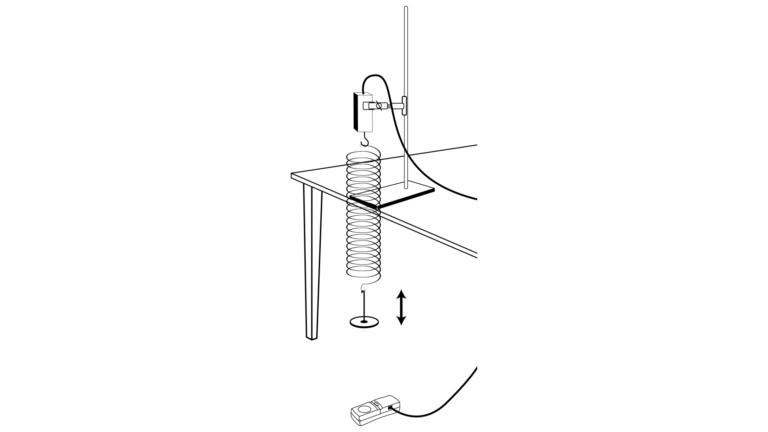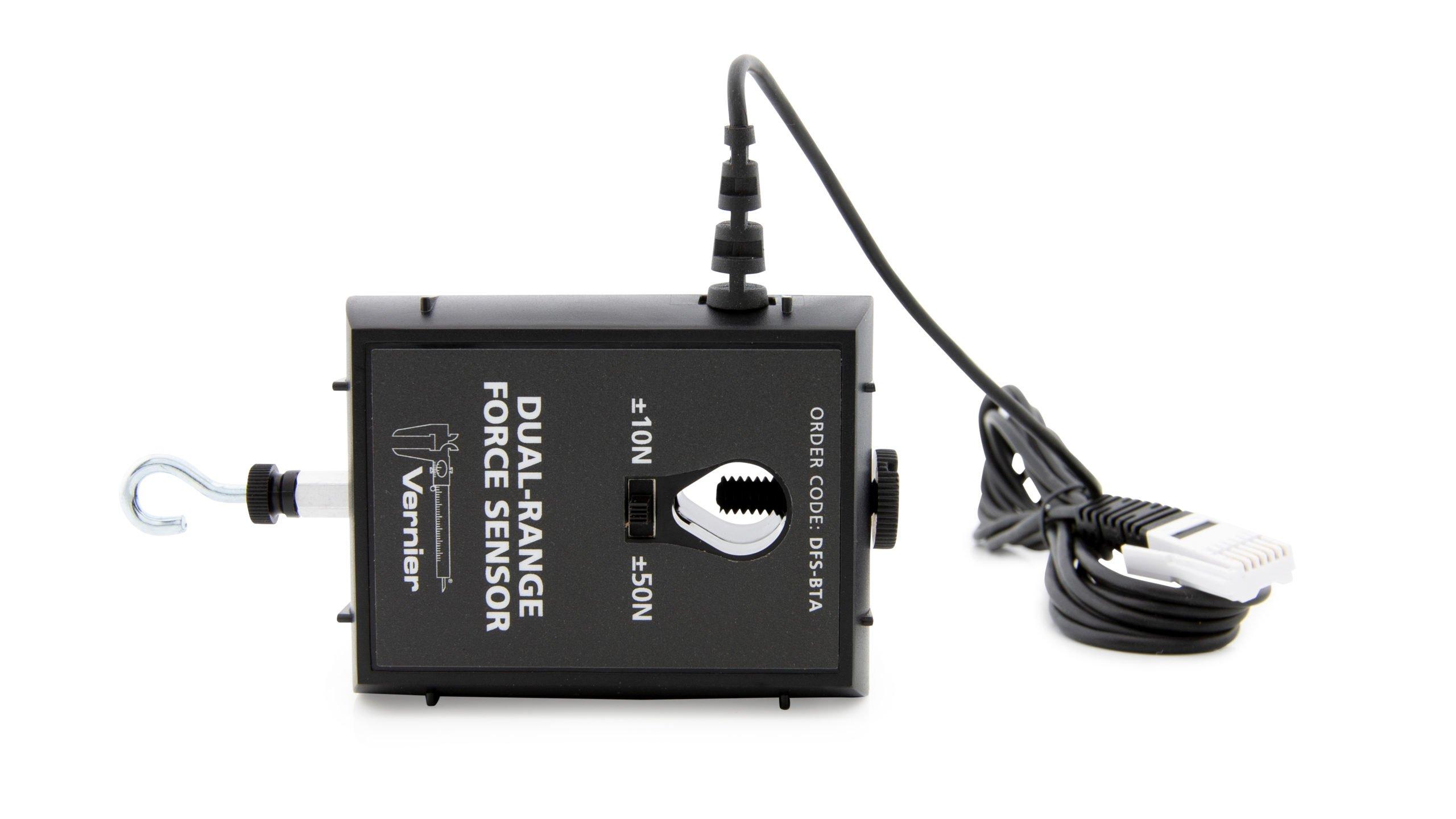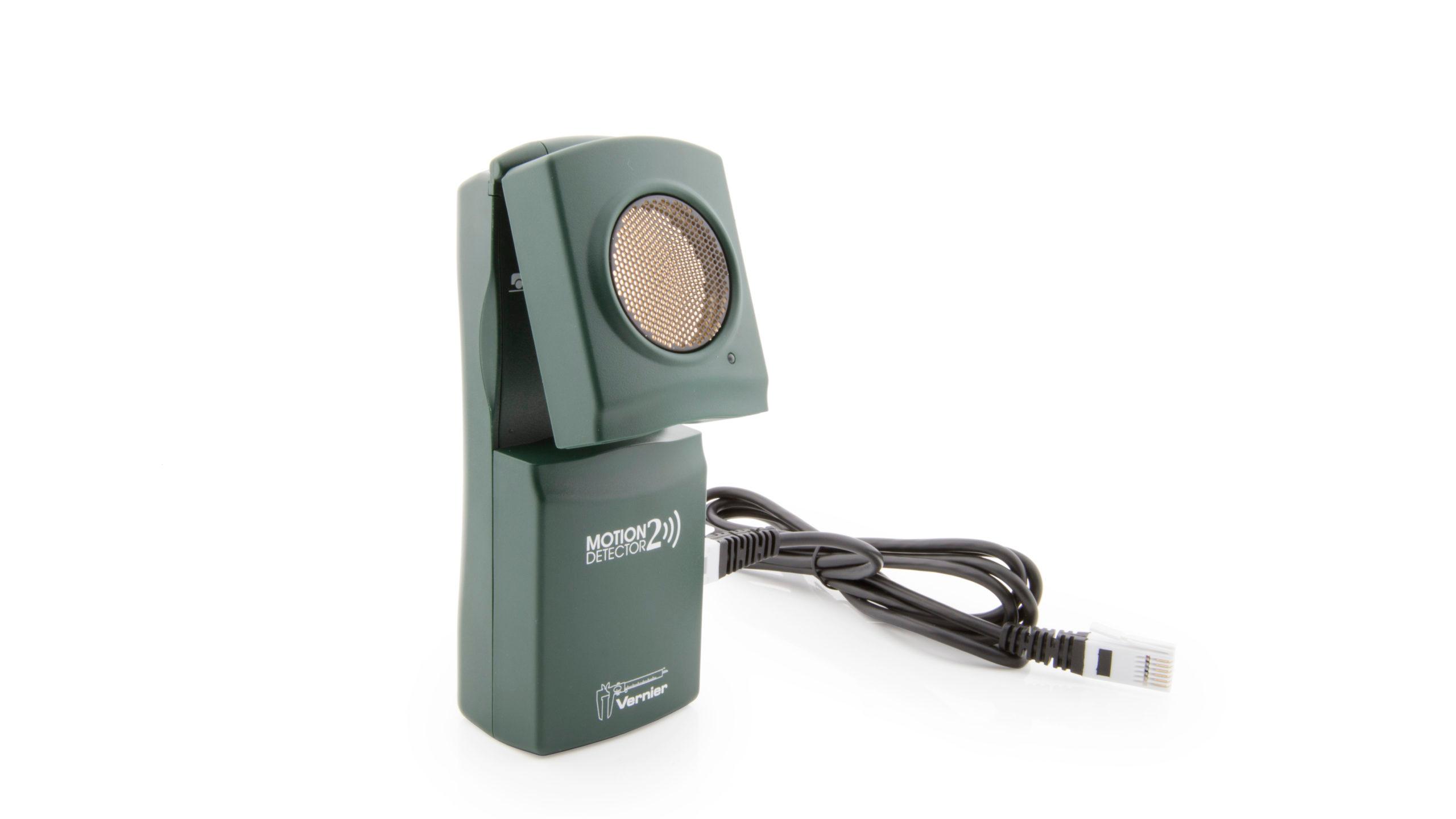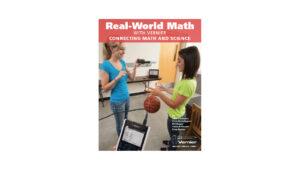Spring Thing – Newton’s Second Law
Experiment #7 from Real-World Math with Vernier
- Education Level
- High School

Introduction
If you push or pull an object (and yours is the only force on the object), the way it changes its motion depends on two things: the force you apply, and the object’s mass. Sir Isaac Newton was the first to recognize that an object’s acceleration is directly proportional to the total force applied (the larger the force, the more rapidly it speeds up or slows down), and inversely proportional to its mass (massive objects have a greater tendency to resist efforts to make them speed up or slow down). Stated mathematically, that is F = ma where F is the force applied to the object, m is its mass, and a is its acceleration. This expression is known as Newton’s second law.
In this activity, you will use a force sensor and a motion detector to record force and acceleration data for an object (called the bob) moving up and down hanging from a light spring. These data will be used to test the mathematical relationship of Newton second law.
Objectives
- Collect force and motion data for a bob moving at the end of a light spring.
- Compare the force and acceleration data to test Newton’s second law.
- Use Newton’s second law to estimate the mass of an object.
Sensors and Equipment
This experiment features the following sensors and equipment. Additional equipment may be required.
Ready to Experiment?
Ask an Expert
Get answers to your questions about how to teach this experiment with our support team.
- Call toll-free: 888-837-6437
- Chat with Us
- Email support@vernier.com
Purchase the Lab Book
This experiment is #7 of Real-World Math with Vernier. The experiment in the book includes student instructions as well as instructor information for set up, helpful hints, and sample graphs and data.



